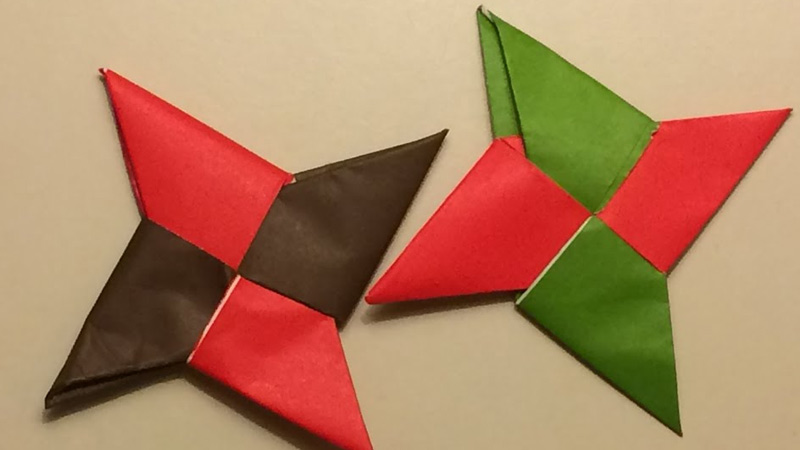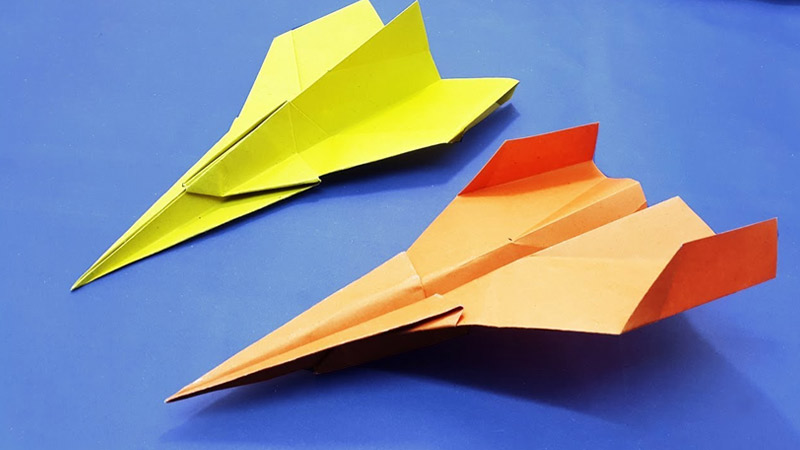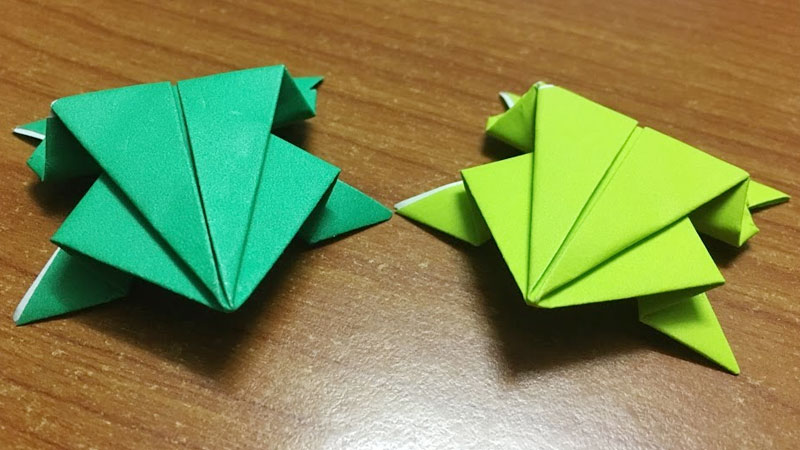Origami, the ancient Japanese art of paper folding, is a delightful and meditative craft that transcends generations. As you delve into the world of delicate creases and intricate folds, a common question arises: What age to start origami?
How do you introduce someone to the enchanting realm of origami? In this exploration, we’ll unravel the possibilities and considerations surrounding the age at which one can start practicing origami.
Origami’s magic lies not only in its ability to transform a simple sheet of paper into intricate forms but also in its accessibility to various age groups. The age to start origami is as diverse as the art itself.
Whether you’re a parent pondering when to introduce your child to this captivating art or an individual curious about the right time to embark on your origami journey, let’s unfold the possibilities and discover the age-appropriate wonders of origami.

What Age To Start Origami?
Origami is a craft that spans generations, from young children to adults, fostering creativity, patience, and spatial awareness. Unlike some crafts that may have age-specific prerequisites, origami is remarkably adaptable.
The essence of origami lies in the simplicity of folding paper, making it accessible to a broad spectrum of ages.
Origami for Young Beginners: Age 5 and Beyond
For young beginners, around the age of 5 or 6 is an ideal time to introduce them to the enchanting world of origami.
At this age, children are developing fine motor skills and spatial awareness, and origami provides a delightful avenue for honing these abilities.
Origami’s benefits for young learners extend beyond manual dexterity. It promotes cognitive development by enhancing problem-solving skills and concentration.
Additionally, the sense of accomplishment derived from completing an origami project can boost a child’s self-esteem.
Middle Childhood: Exploring Complexity (Ages 7-12)
As children progress into middle childhood, typically between the ages of 7 and 12, they can explore more complex origami designs.
This origami age group is characterized by increased attention spans and a willingness to tackle more intricate folding patterns.
During these formative years, origami can be incorporated into educational settings, introducing mathematical concepts such as symmetry, geometry, and spatial relations.
The hands-on nature of origami makes it a valuable tool for engaging children in learning while fostering their artistic expression.
Teenagers and Beyond Advancing Skills and Creativity
Teenagers and adults can continue to advance their origami skills, exploring sophisticated models and intricate designs.
The meditative and therapeutic aspects of origami become particularly relevant during the stressors of adolescence and adulthood.
Moreover, origami serves as a creative outlet for self-expression. Teenagers can delve into thematic origami projects, exploring their interests and showcasing their personality through folded creations.
The versatility of origami allows for the exploration of various paper types, colors, and textures, adding depth and complexity to their artistic pursuits.
Considering Individual Readiness: Beyond Age Norms
While age can serve as a general guideline, it’s crucial to consider individual readiness and interests when introducing someone to origami.
Some children may show a keen interest in paper folding at an earlier age, while others may discover their passion for origami later in life. Likewise, adults who have never explored origami can embark on this creative journey at any time.
Some may find joy in the meticulous process of folding, while others may appreciate the challenge of mastering complex designs. Tailoring the complexity of origami projects to match one’s readiness ensures a positive and enjoyable experience.
Promoting Intergenerational Bonding
Origami offers a unique opportunity for intergenerational bonding. Parents, grandparents, and caregivers can share the joy of origami with younger generations, creating memorable experiences and passing down a cherished art form.
The collaborative nature of origami sessions fosters communication, patience, and shared creativity.
Adapting Origami for Different Abilities
Origami can be adapted to accommodate individuals with varying abilities. Simple, tactile projects may be suitable for those with fine motor challenges, providing a fulfilling creative outlet.
The emphasis on the process rather than the end result allows everyone to experience the meditative and therapeutic benefits of origami.
Origami Easy for Kids: 5 to 7-Year-Old Kids
Introducing young children to the enchanting world of origami is a delightful way to nurture their creativity and fine motor skills. For 5, 6, and 7-year-olds, simplicity and enjoyment are key.
Here is some easy and engaging origami for kindergarten tailored to captivate their imaginations and keep those little fingers happily folding.
Paper Airplane: Origami for 5-Year-Olds

A classic favorite, the paper airplane is an ideal starting point for easy origami. Simple folds can transform a regular sheet of paper into an airplane ready for takeoff. This project not only introduces basic folding techniques but also adds an element of play.
How to Make
Fold the paper in half lengthwise. Unfold and fold the top edges down to the center crease. Fold the top triangle down to meet the bottom edge.
Fold the two top corners down to the center crease. Fold the entire piece in half along the original center crease. Extend the wings by folding them down slightly.
Origami Boat: Origami for 6-Year-Olds
Sail into the world of origami with a simple boat. This project is perfect for teaching basic folds and creating a playful, floating masterpiece.
How to Make
Start with a square sheet of paper. Fold the paper in half diagonally to create a triangle. Fold the two bottom corners up to the top corner.
Fold the bottom tip up to meet the top edge. Open the bottom flaps to reveal the boat shape.
Origami Frog: Origami for 7-Year-Olds
Jump into fun with an easy origami frog. This project introduces a few more folds and results in a delightful hopping friend.
How to Make
Begin with a square piece of paper. Fold the paper in half diagonally to form a triangle. Fold the two bottom corners up to the top corner.
Fold the two side corners to the center, creating a diamond shape. Fold the top point down to create the frog’s head. Unfold the bottom flaps to reveal the frog’s legs.
How to Introduce Kids to Origami?
Introducing kids to origami can be a delightful and educational journey. Here’s a comprehensive guide to help you navigate this artistic adventure with young learners.
Choose Age-Appropriate Projects

Tailor your origami projects to the age and skill level of the children. Start with simple, straightforward designs for beginners, such as paper airplanes, boats, or frogs for younger kids (around 5-7 years old).
As their skills progress, you can introduce more complex designs like butterflies, cats, or cranes.
Gather Materials
Ensure you have all the necessary materials ready before starting an origami session. You’ll need square sheets of paper preferably colored or patterned to make the process more engaging. Using larger-sized paper for beginners can make folding more manageable.
Create a Dedicated Origami Workspace
Set up a designated area for origami activities. A clean, flat surface with ample space allows kids to focus on their creations without distractions. Use a table or desk with good lighting to enhance visibility.
Start with a Demonstration
Before diving into folding, provide a visual demonstration of the first few steps of the chosen origami project. Walk the children through the folds, emphasizing clarity and simplicity. A step-by-step approach ensures everyone can follow along.
Use Interactive Resources
Leverage technology to enhance the learning experience. There are numerous online tutorials and videos specifically designed for kids to learn origami. These resources provide visual guides and often include fun animations, making the process more interactive.
Encourage Group Participation
Origami can be a social and collaborative activity. Encourage group participation by organizing origami sessions with siblings, friends, or classmates. Sharing the experience can add an element of fun and friendly competition.
Emphasize Patience and Perseverance
Origami requires patience and attention to detail. Emphasize the importance of taking one step at a time and not getting discouraged if a fold doesn’t turn out perfectly. Learning the art of origami is a gradual process that improves with practice.
Incorporate Storytelling
Make the origami experience more immersive by incorporating storytelling. Choose origami projects that represent characters from a favorite story or create a narrative around the folded creations. This not only enhances creativity but also sparks imaginative thinking.
Celebrate Achievements
Celebrate each completed origami project as an achievement. Display their creations proudly, whether it’s on a dedicated origami wall or as part of a mini-exhibition. Recognition and positive reinforcement boost children’s confidence and encourage further exploration.
FAQs
At what age is it suitable to introduce kids to origami?
Origami can be introduced to kids as young as 5 or 6 years old. Simple projects with basic folds are ideal for younger children, while older kids can explore more complex designs.
How can I make origami sessions engaging for kids?
Make origami engaging by choosing colorful paper, incorporating storytelling, using interactive resources like online tutorials, and organizing group sessions. Thematic origami projects and celebrations can also add excitement.
Are there educational benefits to teaching kids origami?
Yes, origami offers various educational benefits. It enhances fine motor skills, fosters creativity, introduces mathematical concepts like symmetry and geometry, and provides an opportunity to explore different cultures through this traditional Japanese craft.
What materials do I need for teaching origami to kids?
For origami sessions with kids, you’ll need square sheets of paper, preferably colored or patterned. Ensure you have a dedicated origami workspace with good lighting and gather any additional materials based on the chosen projects.
How can I encourage patience and perseverance during origami sessions?
Emphasize the step-by-step nature of origami, encouraging kids to take one fold at a time. Celebrate small achievements, be patient, and create a positive environment where mistakes are seen as part of the learning process.
Conclusion
Origami welcomes enthusiasts of all ages, offering a timeless journey into creativity and mindfulness. Yet, there is always the right time for the right thing.
For young beginners, starting around 5 or 6 years old can be an ideal introduction, fostering fine motor skills and spatial awareness.
However, there’s no upper limit; individuals of any age can embark on the enchanting world of paper folding. Origami serves not just as a craft but as a therapeutic and engaging pursuit, making it a perfect lifelong companion.
Whether you’re a child discovering the joy of folding for the first time or an adult seeking a calming artistic outlet, the age to begin your origami adventure is whenever curiosity and fascination intertwine.
So, unfold your paper, embrace the art, and let origami be a timeless companion on your creative journey. Start teaching your kids today!
Leave a Reply